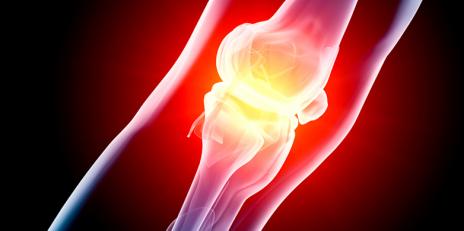Rheumatoid arthritis is a condition that causes painful inflammation of several joints in the body - the joint capsule becomes swollen, and the disease can also destroy cartilage and bone as it progresses. It affects 0.5% to 1% of the world's population and doctors have used various drugs to slow or stop the progression of the disease.
Eidgenössische Technische Hochschule Zürich (ETH Zurich) researchers have developed a therapy that takes the treatment of rheumatoid arthritis in mice to a new level: after receiving the medication the animals have been fully cured.
The drug is a biotechnologically produced active substance consisting of two fused components. One component is the body's own immune messenger interleukin 4 (IL-4); previous studies have shown that this messenger protects mice with rheumatoid arthritis against cartilage and bone damage. ETH scientists have coupled an antibody to IL-4 that, based on the key-lock principle, binds to a form of a protein that is found only in inflamed tissue in certain diseases - and in tumor tissue.

Rheumatoid arthritis causes inflammation of multiple joints, such as the knee joint, as shown here. (Photo: istock.com / Raycat)
Localized drug delivery
"As a result of combination with the antibody, IL-4 reaches the site of the disease when the fusion molecule is injected into the body," says pharmacist Teresa Hemmerle,
lead author of the study
who has just completed her dissertation. "It allows us to concentrate the active substance at the site of the disease. The concentration in the rest of the body is minimal, which reduces side-effects."
The researchers tested the new fusion molecule, which they refer to as an 'armed antibody', in a CTI project together with the ETH spin-off Philochem. They used a mouse model in which the animals developed swollen, inflamed toes and paws within a few days.
Among other things, the researchers studied the fusion molecule in combination with dexamethasone, a cortisone-like anti-inflammatory drug that is already used to treat rheumatoid arthritis in humans. The researchers started treating each mouse as soon as they began showing signs of the disease in the form of swollen extremities.
Clinical trials in the next year
When used separately, the new fusion molecule and dexamethasone managed only to slow the progression of the disease in the affected animals. In contrast, the typical signs of arthritis, such as swollen toes and paws, disappeared completely within a few days when both medications were administered at the same time. Concentrations of a whole range of immune messengers in blood and inflamed tissue, which are changed in rheumatoid arthritis, returned to their normal levels. "In our mouse model, this combined treatment creates a long-term cure," says Hemmerle, who has been continuing the project at Philochem.
Based on the promising results from the animal model, Philochem is currently preparing to test the new drug in clinical trials on people suffering from rheumatoid arthritis. According to the researchers, these tests will begin in the next year.





Comments